
Energy Efficient Windows
What Is the Ideal Room Temperature? Here's What You Need to Know!
Have you ever noticed that no matter what the thermostat says, someone in your house is still too hot while another is shivering under a blanket? We've all been there!
Finding the “perfect” room temperature isn’t as simple as setting the dial to a single number. Comfort depends on personal preferences and factors (like age, gender, and health), environmental conditions (like humidity and airflow), and even the way your home is built.
So, do you want to know what the ideal room temperature is? Keep reading!
Key Takeaways
- The ideal room temperature varies by person and situation. While the general range is 68-72°F (20-22°C), age, gender, health, and even environmental factors can influence comfort.
- Elderly individuals may prefer slightly warmer indoor temperatures of around 72-75°F (22-24°C), while babies’ nurseries are safest at 68-72°F (20-22°C).
- Bedroom temperatures of 65-68°F (18-20°C) are better for quality sleep.
- If you have pets, consider their species and the temperature requirements for them. Seek veterinary help if you're not sure about your pets' needs.
- To maintain the desired room temperature, use smart thermostats, insulate your home properly, and install high-performance windows and doors that reduce drafts, heat loss, and humidity swings, and even energy bills.
What Is the Ideal Room Temperature?
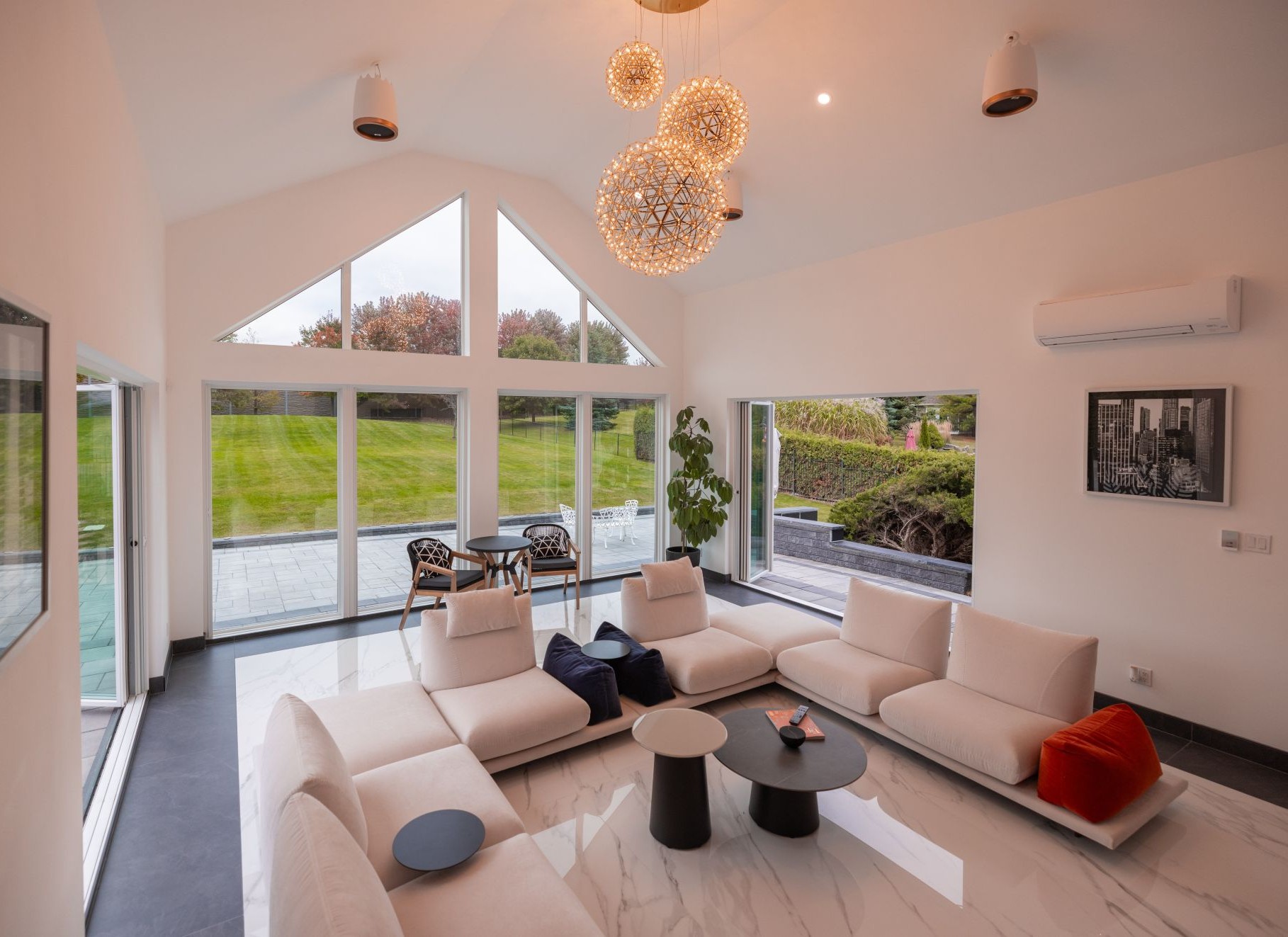
Generally, the ideal room temperature for comfort and well-being falls between 68 and 72°F (20-22°C). However, this range is definitely not set in stone, because the room temperature you'll feel comfortable at depends on numerous factors, including personal factors, which we'll discuss below.
Gender Differences
Humans generally have a core body temperature of approximately 98.6°F (37°C). However, studies have shown that a woman's core body temperature is slightly lower than a man's - approximately 98.2°F (36.7°C).
Moreover, a woman's hands are usually significantly colder than a man's hands, reaching as low as 82.7°F (28.1°C), while a man's hands are usually at 90°F (32.3°C).
Furthermore, women are five times more likely to suffer from Raynaud's disease, which affects their response to cold and stress.
It is all linked to body composition, metabolic rate, and hormonal changes, to name a few.
Age
Elderly people often feel colder than younger people because their metabolic rates are slower, which means that some body receptors may not work as quickly to alert the body about temperature changes.
Elderly people also lose insulating subcutaneous fat. Another factor that contributes to this is the loss of blood vessel elasticity, which affects circulation and the ability to retain heat.
Because of these, elderly people, especially those with respiratory problems, will feel colder than younger adults in a cooler room. They are also at a higher risk of falling ill, even with minor temperature variations.
Health Conditions
Conditions like:
- Cardiovascular disease
- Anemia
- Kidney disease
- Diabetes
- Thyroid problems
- Respiratory diseases
- Other chronic illnesses
...can affect the way someone perceives room temperature. Some medications can also affect this.
Environmental and Physical Factors
Here are some other factors that dictate the right temperature in your house:
- Humidity: for example, high humidity makes heat feel more oppressive, since sweat doesn’t evaporate effectively. Plus, it will make the air conditioner work harder to maintain the desired room temperature.
- Air movement: drafts or fans increase convective heat loss, making a room feel cooler than the thermometer suggests.
- Clothing: clothing insulation dramatically changes how you feel at certain room temperatures (e.g. you'll feel much hotter in synthetic clothes).
- Activity level: active people produce more heat. Someone sitting at a desk might prefer 73°F (23°C), while someone cleaning or exercising might prefer 64-68°F (18-20°C).
- Expectations & adaptation: for example, a Scandinavian may find 64-68°F (18-20°C) comfortable indoors, while someone from a tropical climate might feel cold.
- Time of day & circadian rhythm: body temperature naturally fluctuates, usually peaking in the late afternoon and dropping at night, influencing comfort preferences.
Ideal Room Temperature in Summer
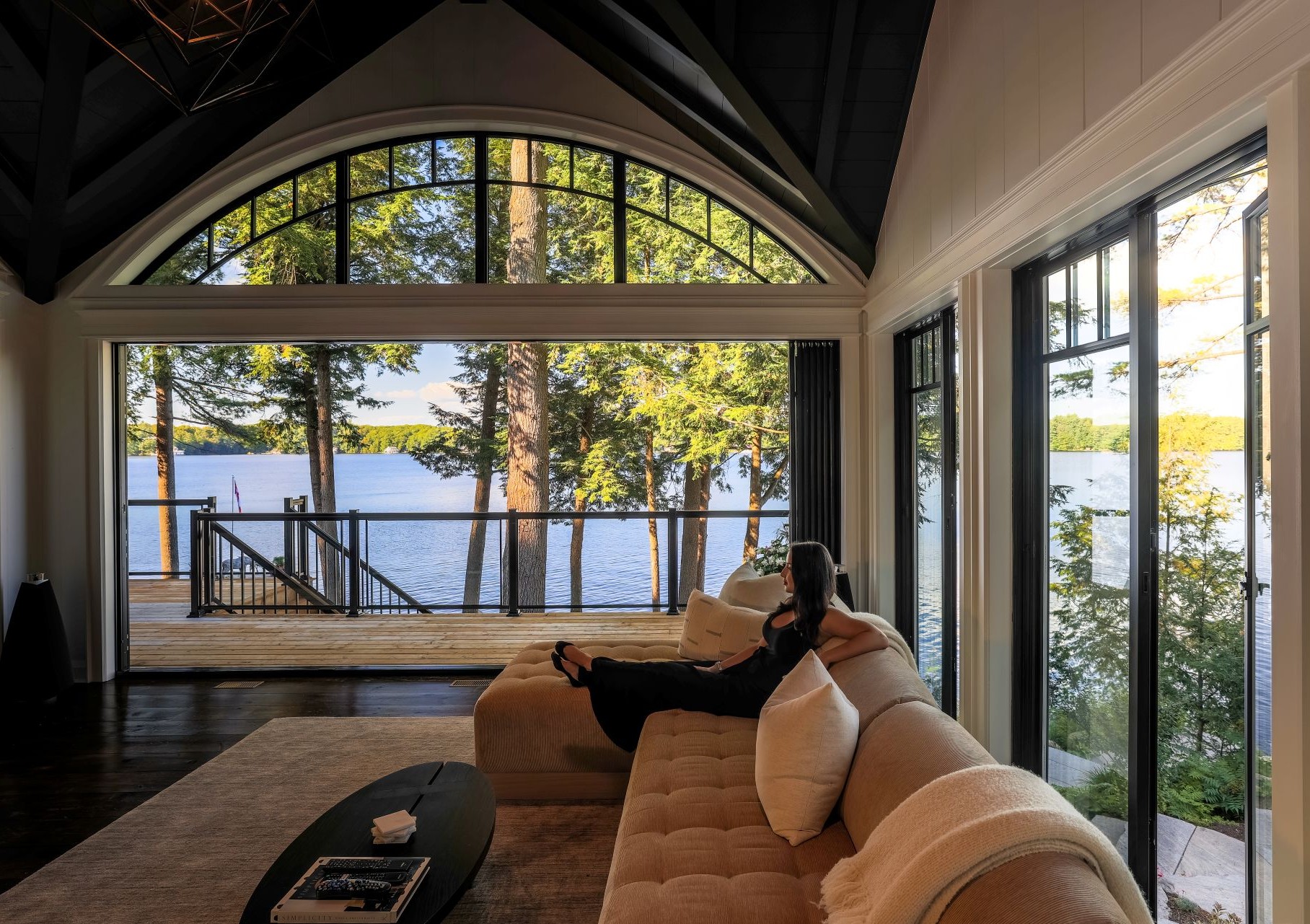
In summer, the ideal indoor temperature should generally stay between 73 and 78°F (23-25.5°C). However, the goal isn’t just cooling the air, but keeping humidity low enough for sweat to evaporate and cool the body.
Also, keep in mind that lower temperatures (below 71°F/22°C) can feel refreshing at first, but prolonged exposure to overly cool air conditioning may cause discomfort, dryness, and even respiratory irritation. Therefore, for both comfort and energy efficiency, experts recommend setting the thermostat closer to 77°F (25°C) if possible.
Ideal Room Temperature in Winter
During the winter months, most people feel comfortable at 68-72°F (20-22°C) indoors.
Lower temperatures (around 64-66°F/18-19°C) can still be healthy if you dress accordingly, but temperatures much below that may cause discomfort, especially for children and elderly individuals who lose body heat more quickly.
Ideal House Temperature for Sleeping
According to the Sleep Foundation, the perfect bedroom temperature for the most comfortable sleep is a few degrees lower than the temperature you're used to during the day: between 65 and 68°F (18-20°C) for adults and 69°F (20.5°C) for infants.
The body’s core temperature naturally drops at night as part of the circadian rhythm, and a slightly cool room supports this process, improving sleep quality. If the room is too warm, it can interfere with deep sleep and REM cycles. You can also find it more difficult to fall asleep and even stay asleep.
Ideal Room Temperature for Babies
Babies are more sensitive to temperature fluctuations. Therefore, it's recommended to keep the room temperature between 68 and 72°F (20 and 22°C).
At night, it's recommended to keep the room temperature in nurseries at approximately 69°F (20.5°C).
Ideal Room Temperature for the Elderly
Older adults often feel colder due to slower metabolism, reduced circulation, and thinner skin. Therefore, it's recommended to keep the room temperature for the elderly slightly higher, at roughly 72-75°F (22-24°C).
For elderly family members with limited mobility or health issues, it's important to ensure that the temperature doesn’t drop below 68°F (20°C).
Ideal Home Temperature for Pets
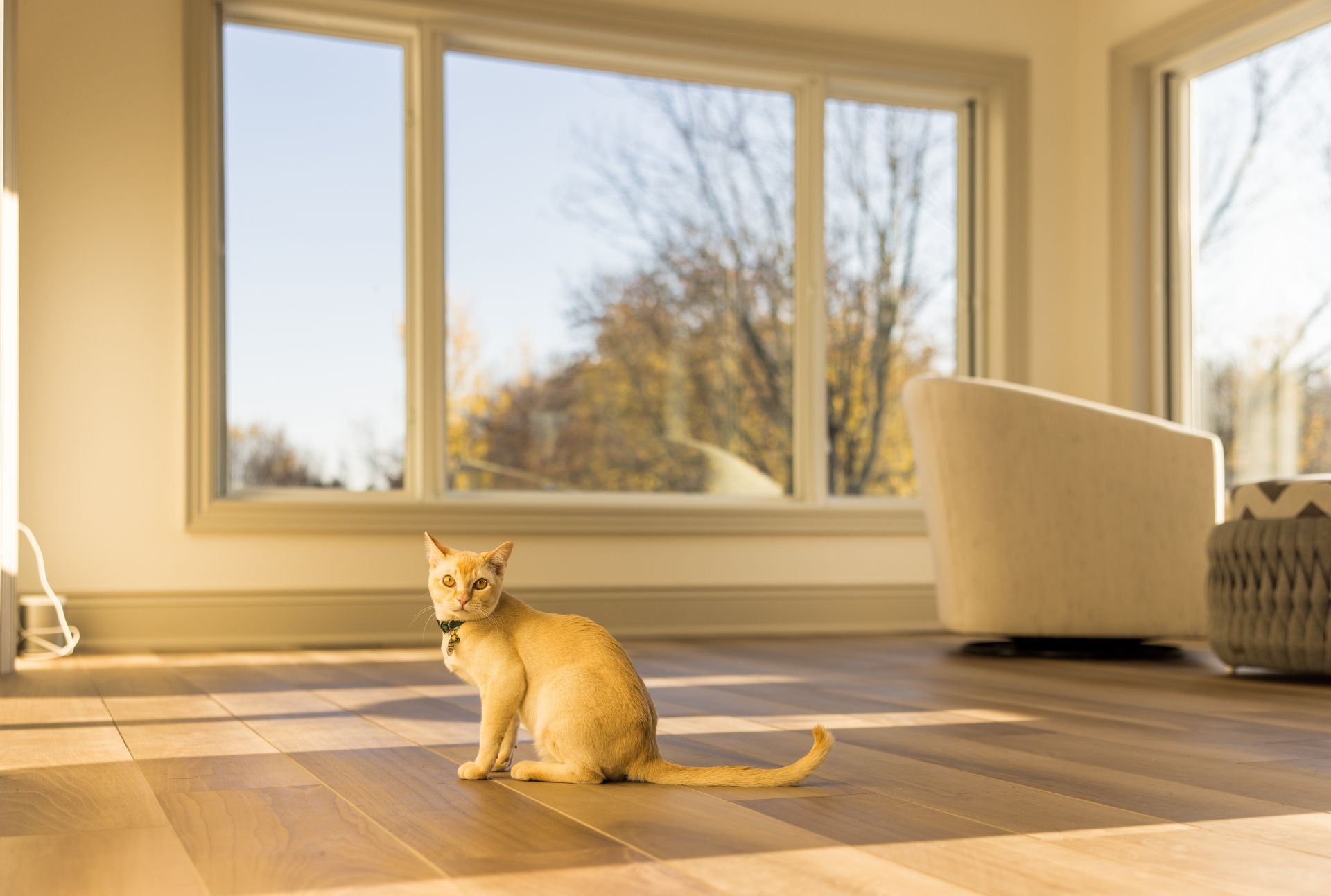
Pets also have comfort zones! For example:
- Dogs and cats are generally comfortable at the same temperatures humans prefer, around 68-72°F (20-22°C). However, cats can tolerate higher temperatures, but not higher than 86°F (30°C).
- Small animals (like rabbits, hamsters, or guinea pigs) may tolerate slightly cooler air but should be protected from drafts.
- Exotic pets (reptiles, tropical birds) often require specialized heating, as they may need much warmer conditions (77-86°F/25-30°C or higher, depending on the species). Other tropical pets cannot handle temperatures higher than 77°F (25°C).
Because pets can’t regulate their environment the way humans do, it’s important to stay informed and follow the veterinary's recommendations regarding room temperature.
Ideal Humidity-Temperature Range
As mentioned earlier, comfort isn’t determined by temperature alone. Humidity plays an equally important role.
For most climates and seasons, the ideal indoor relative humidity is 40-60%. Within this range:
- The air feels fresh without being too dry.
- The body’s natural cooling (sweating) works effectively.
- Risks of mold, dust mites, and respiratory irritation are minimized.
However, in winter, when outdoor temperatures drop significantly, it's recommended to lower humidity levels to 30-35% to prevent condensation.
How to Maintain the Perfect Room Temperature
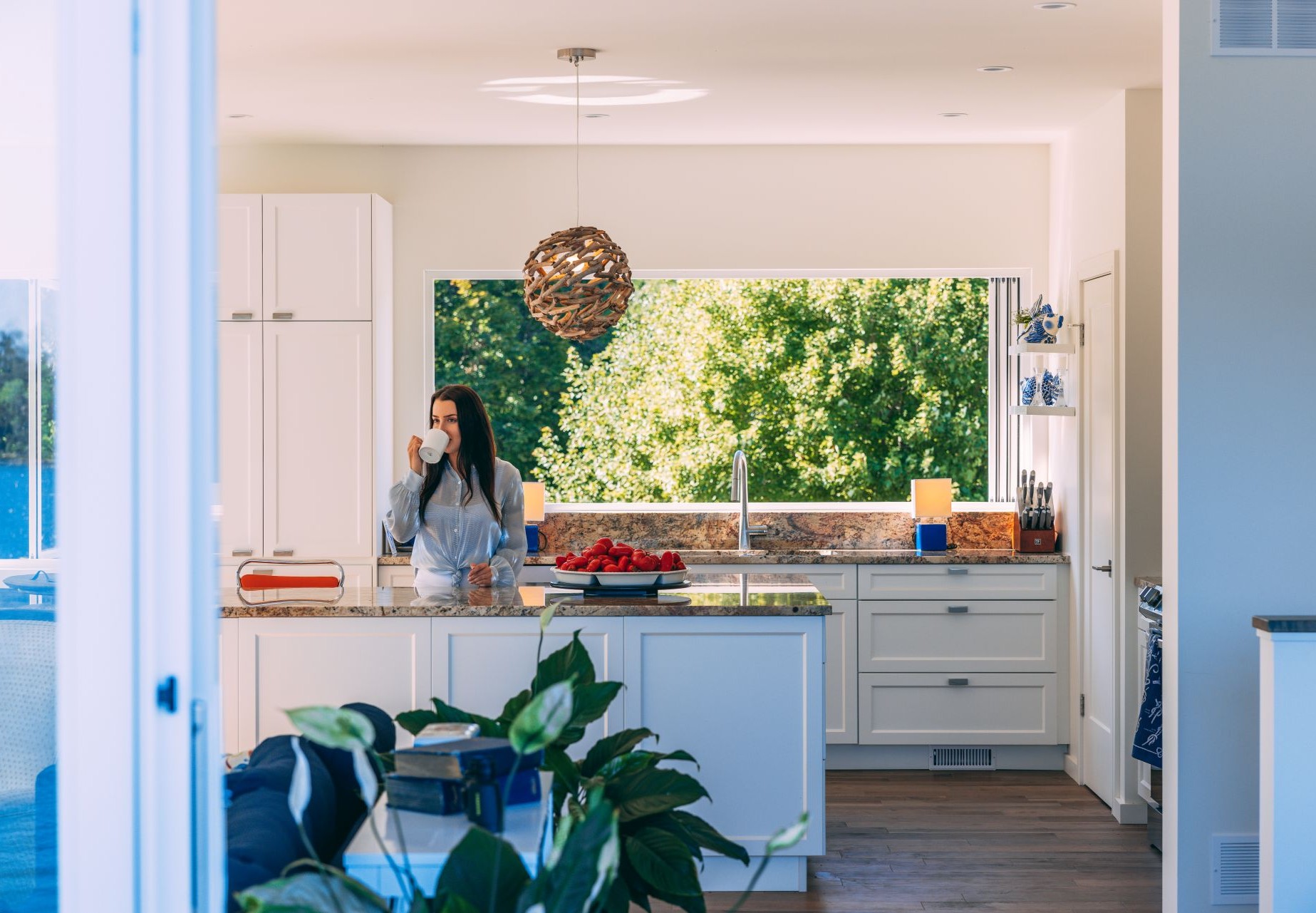
Here are some tips that can help you maintain a comfortable temperature indoors:
- Use smart thermostats: they automatically adjust heating and cooling based on time of day, saving energy while maintaining comfort.
- Insulate properly: well-insulated walls, ceilings, and floors reduce heat loss in winter and keep heat out in summer.
- Circulate air: ceiling fans, portable fans, and HVAC systems help distribute air evenly, preventing hot or cold spots.
- Use HVAC zoning: this allows you to divide your home into various clusters, so you can set one or two rooms at a specific temperature (the bedrooms upstairs, for example) and the other rooms in the house at another temperature.
- Control humidity: use humidifiers/dehumidifiers to keep the 40–60% sweet spot.
- Adjust clothing and bedding: Sometimes comfort is easier (and more sustainable) to achieve by adapting what you wear indoors rather than constantly changing the thermostat.
The Role of Windows and Doors in Maintaining Room Temperature
Windows and doors are often the weak points in a building’s thermal envelope. Here's why:
- Heat loss in winter: single-pane or poorly sealed windows allow warm air to escape and let in drafts, making rooms feel colder even if the thermostat is set high.
- Heat gain in summer: sunlight streaming through glass can raise indoor temperatures significantly, especially in south- and west-facing rooms.
- Air leakage: gaps around doors and windows can cause constant fluctuations in room temperature.
Here's what you can try to minimize these effects, rely less on central heating and cooling systems, and limit energy usage:
- Install double- or triple-glazed windows for better insulation.
- Equip windows with Low-E coatings.
- Use thermal curtains or blinds to block unwanted heat and retain warmth.
- Apply weatherstripping and caulking around frames to seal gaps.
- Install windows with frames that do not warp and crack in extreme temperature fluctuations.
- Consider strategic ventilation: open windows at night in summer or on mild days to naturally regulate temperature and improve air quality.
Enjoy the Most Comfortable Room Temperature with Magic!
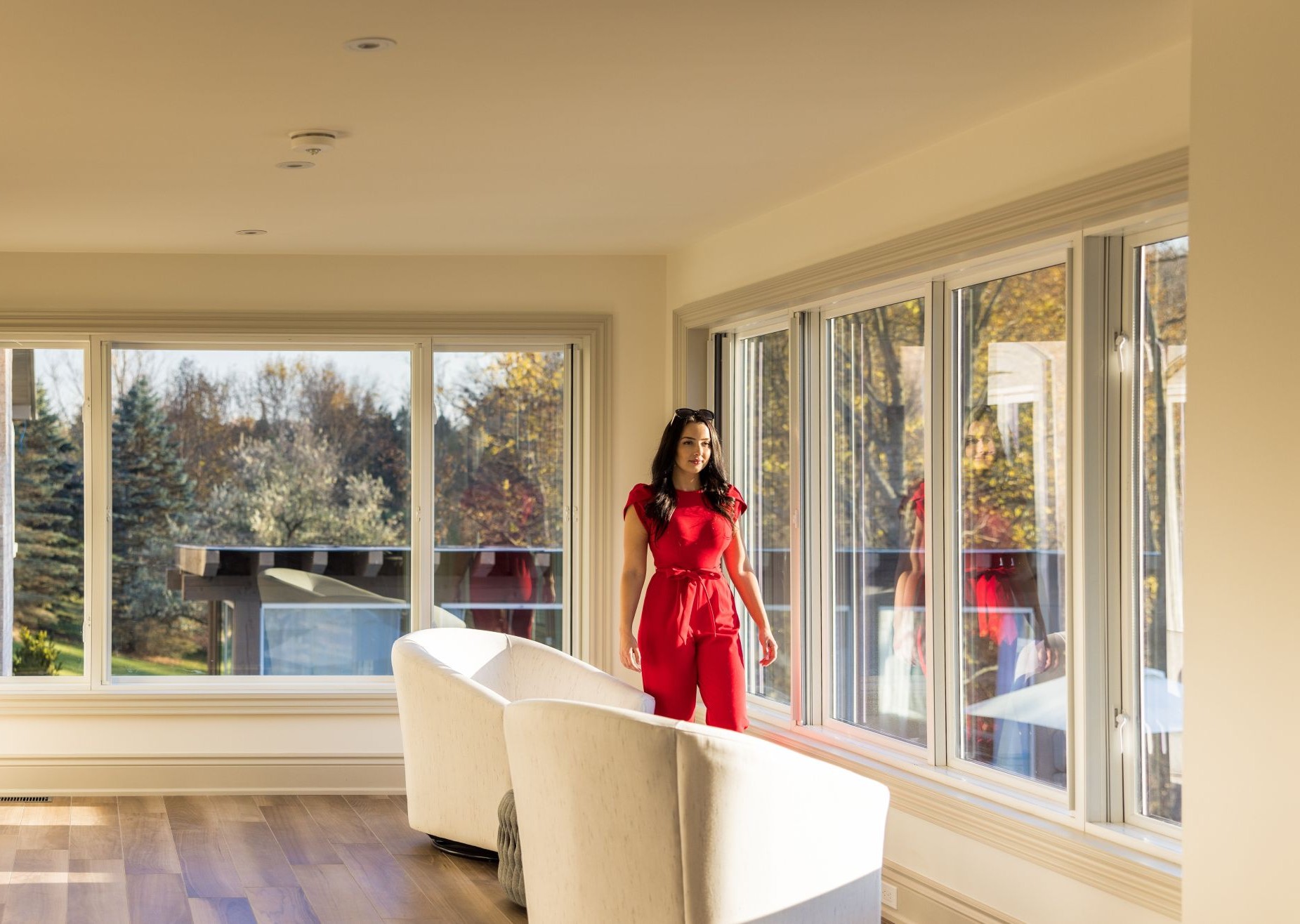
As mentioned earlier, windows and glass doors are among the weakest points in a home's insulation. They are responsible for a large share of heat gain in summer and heat loss in winter. This is why it's of utmost importance to invest in high-quality units that will behave almost like a well-insulated wall! And that's what Magic can help you with!
Magic offers advanced window and door solutions engineered to optimize thermal performance for comfortable living. Here's how our signature technologies contribute to maintaining ideal air temperature:
All of these features can prevent hot or cold air from entering in, thus maintaining ambient temperature within desired levels. This means you won't have to rely too much on your cooling and heating systems, which also translates into less energy consumption and, therefore, lower energy costs.
Curious to learn more? Book a free consultation with Magic!
Frequently Asked Questions
What is the ideal room temperature in Canada?
The ideal room temperature in Canada is generally 68–72°F (20–22°C) for comfort and well-being, though slight adjustments are made seasonally and based on personal preferences. In winter, some people, especially the elderly, may prefer slightly warmer temperatures around 72–75°F (22–24°C).
Is 22 degrees a good room temperature?
Yes, 22°C (72°F) falls within the recommended comfort range for most people and is suitable for living areas, providing a balance between warmth and energy efficiency. It’s generally comfortable for adults, children, and most pets. However, it is recommended to lower it slightly during the night for better sleep.
Is 18 degrees warm enough in a house?
18°C (64°F) can feel cool for many adults, but it may be acceptable if you are wearing warm clothing and using blankets, especially in bedrooms. For elderly individuals or infants, this temperature may be too low and could require additional heating.
Is 23 degrees too hot for a house?
23°C (73°F) is slightly above the standard comfort range for general living but is not uncomfortably hot for most people. In fact, this is generally the most recommended room temperature during the summer months.
What is the best temperature for sleeping?
The best temperature for sleeping is between 65-68°F (18-20°C), with 65°F (18°C)being optimal for promoting restful sleep.
What are the ideal temperature ranges for vulnerable groups like infants and the elderly?
The ideal temperature range for infants is between 68 and 72°F (20 and 22°C), while elderly individuals should live in environments with temperatures between 72-75°F (22-24°C) to ensure their comfort and safety.
Does humidity impact thermal comfort?
Humidity has a significant impact on thermal comfort. It is best to keep indoor humidity levels between 30-60% crucial for maintaining a comfortable environment.